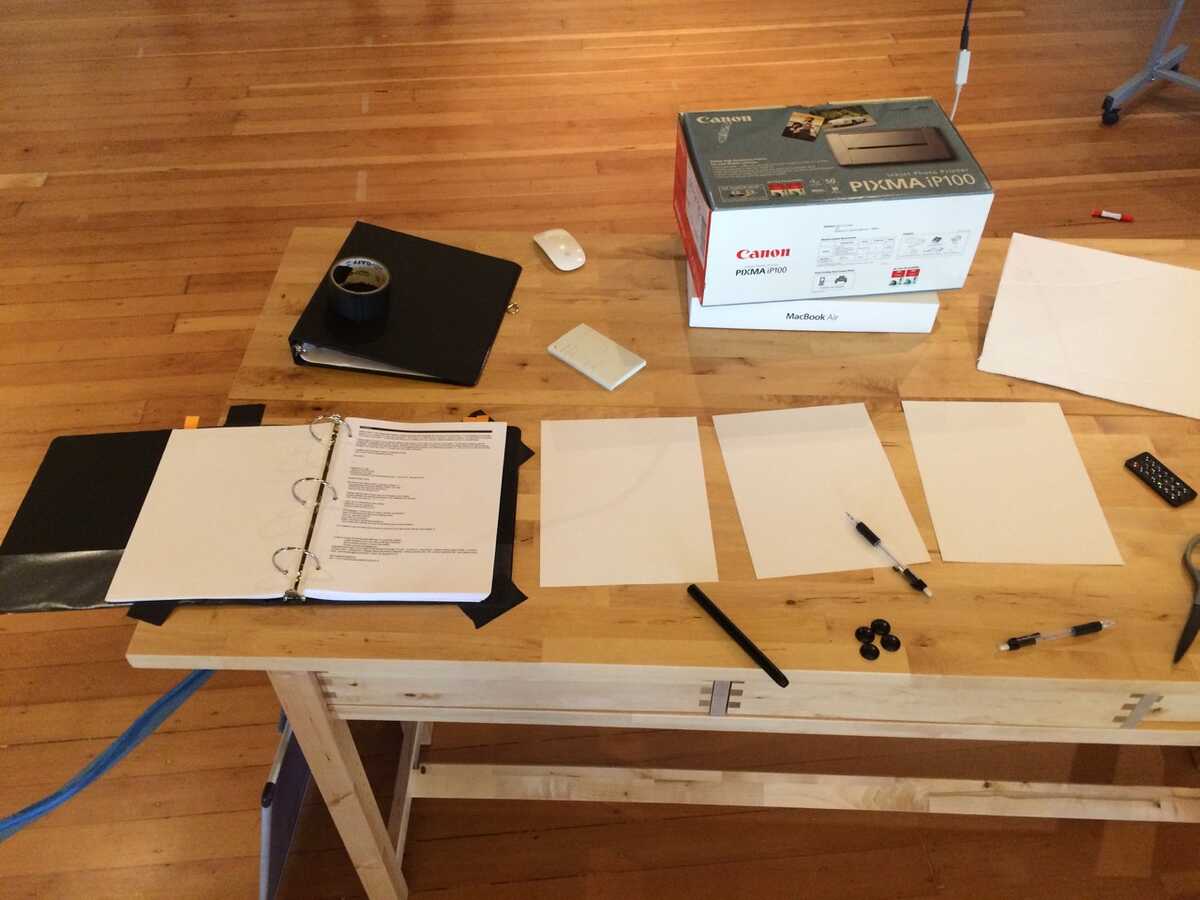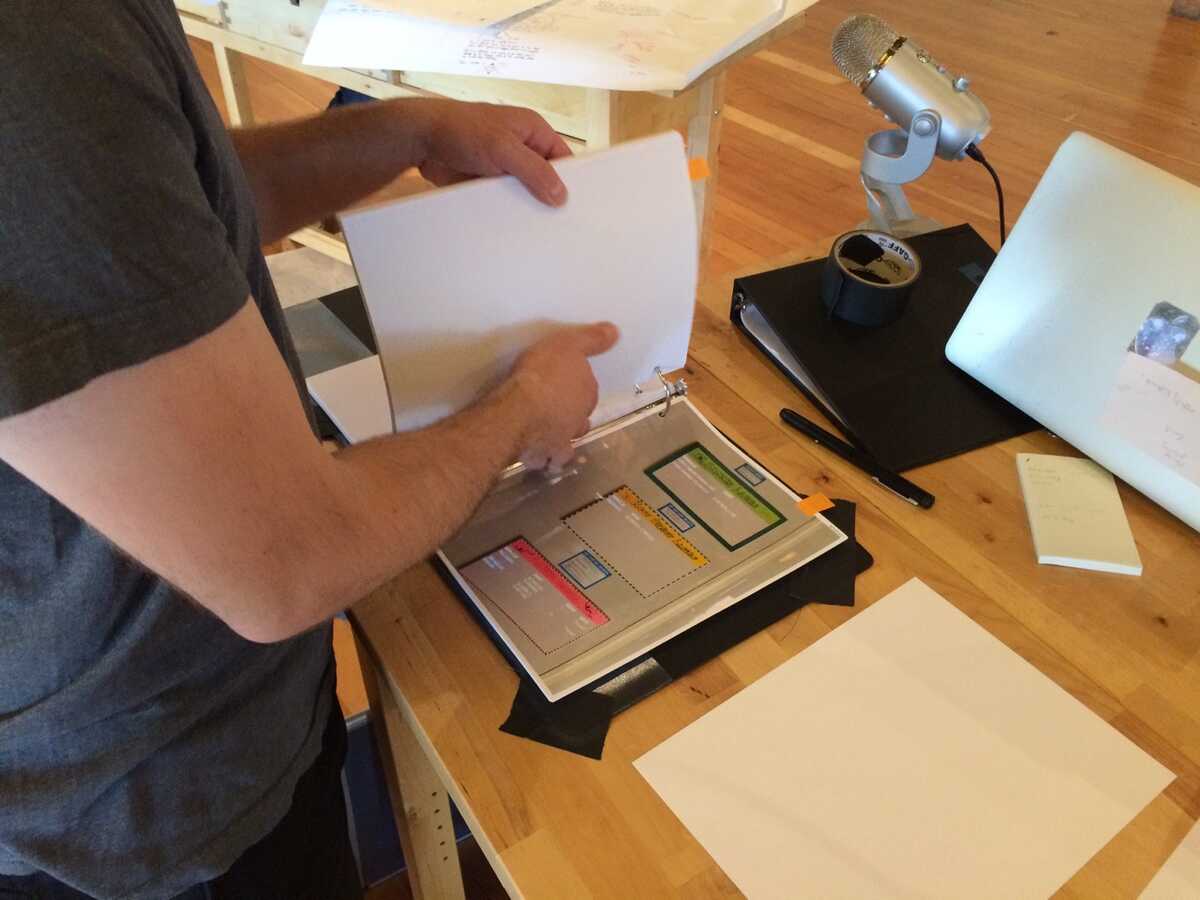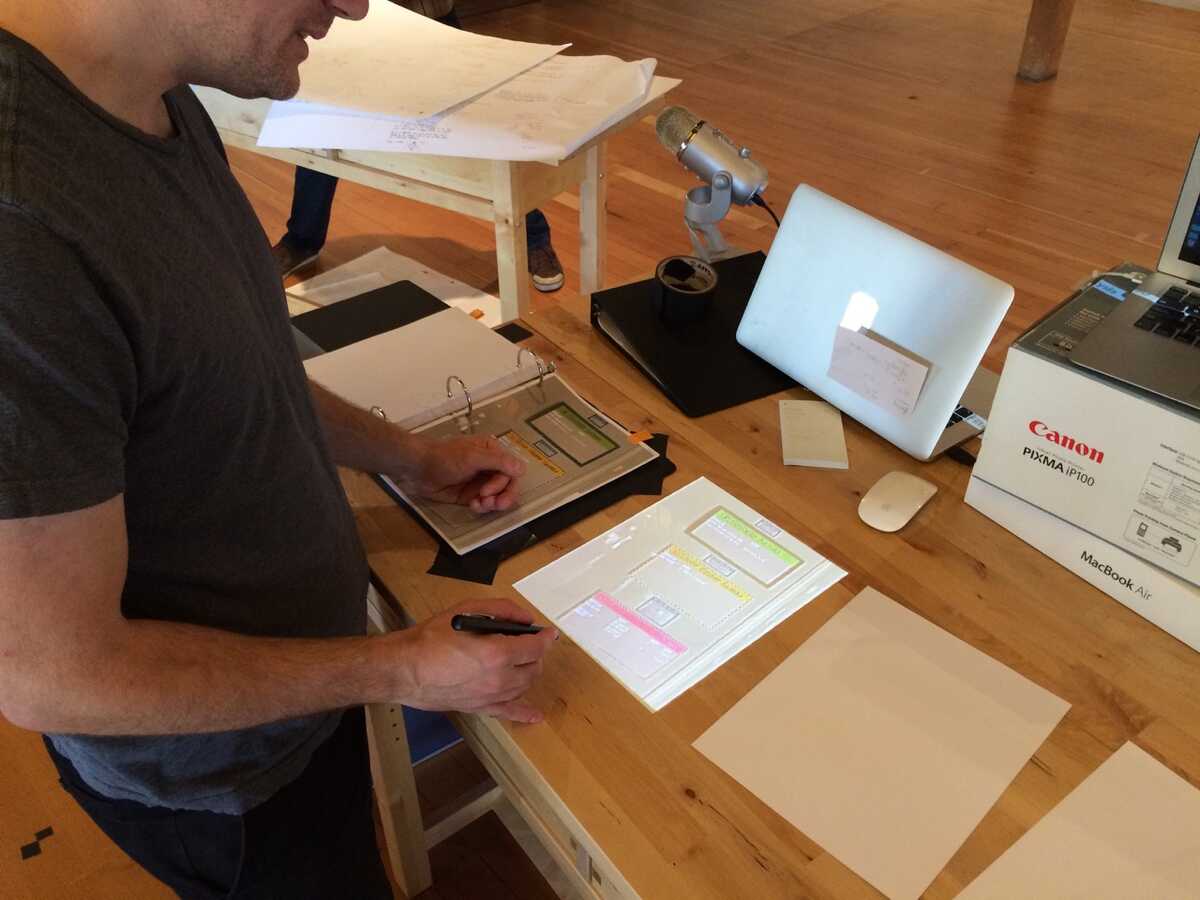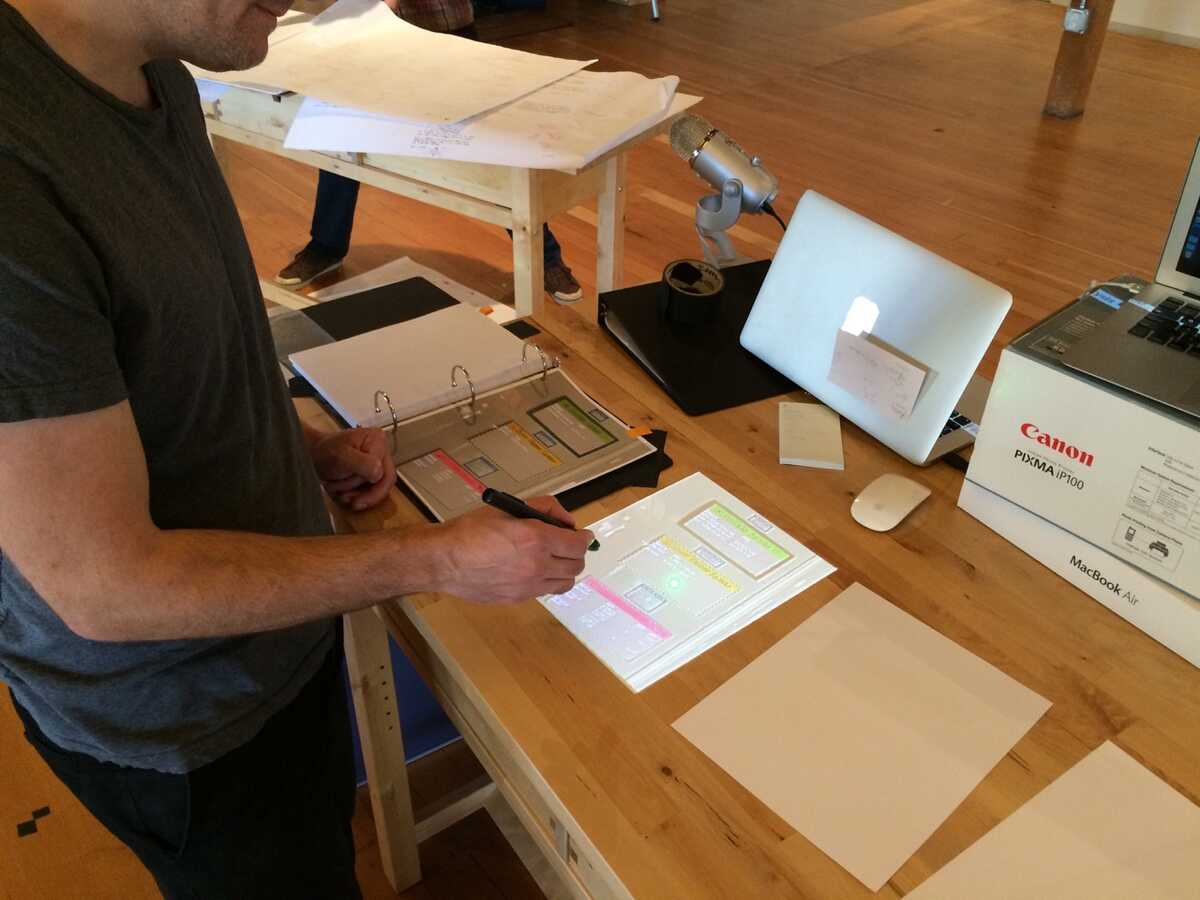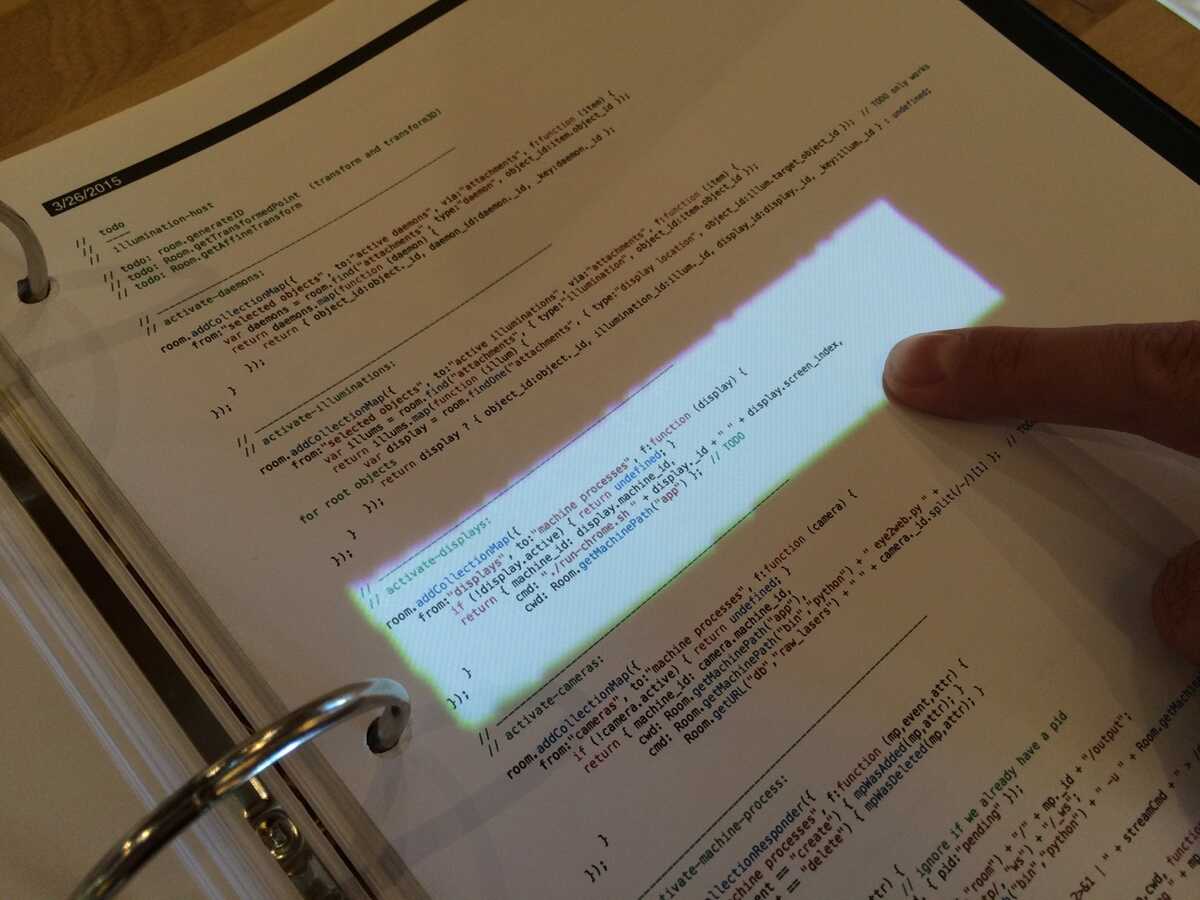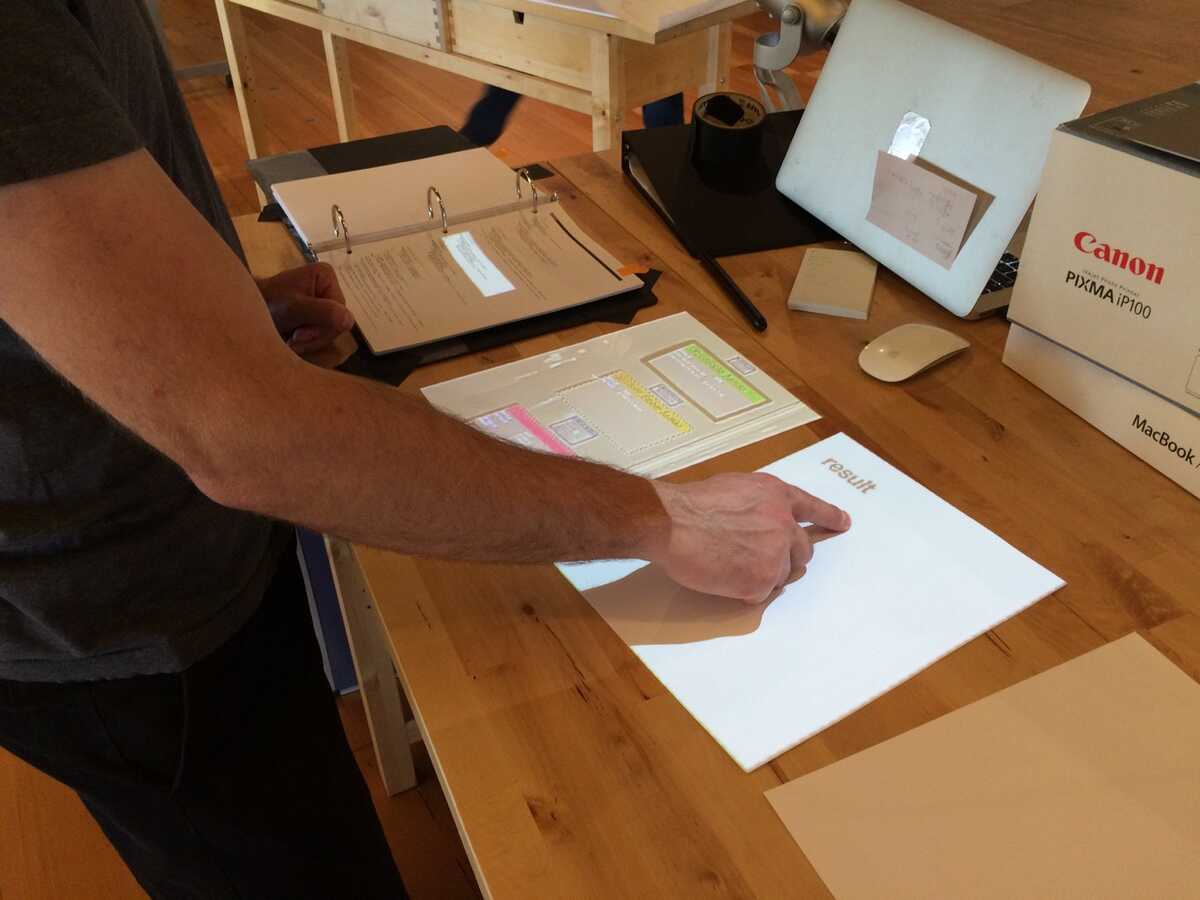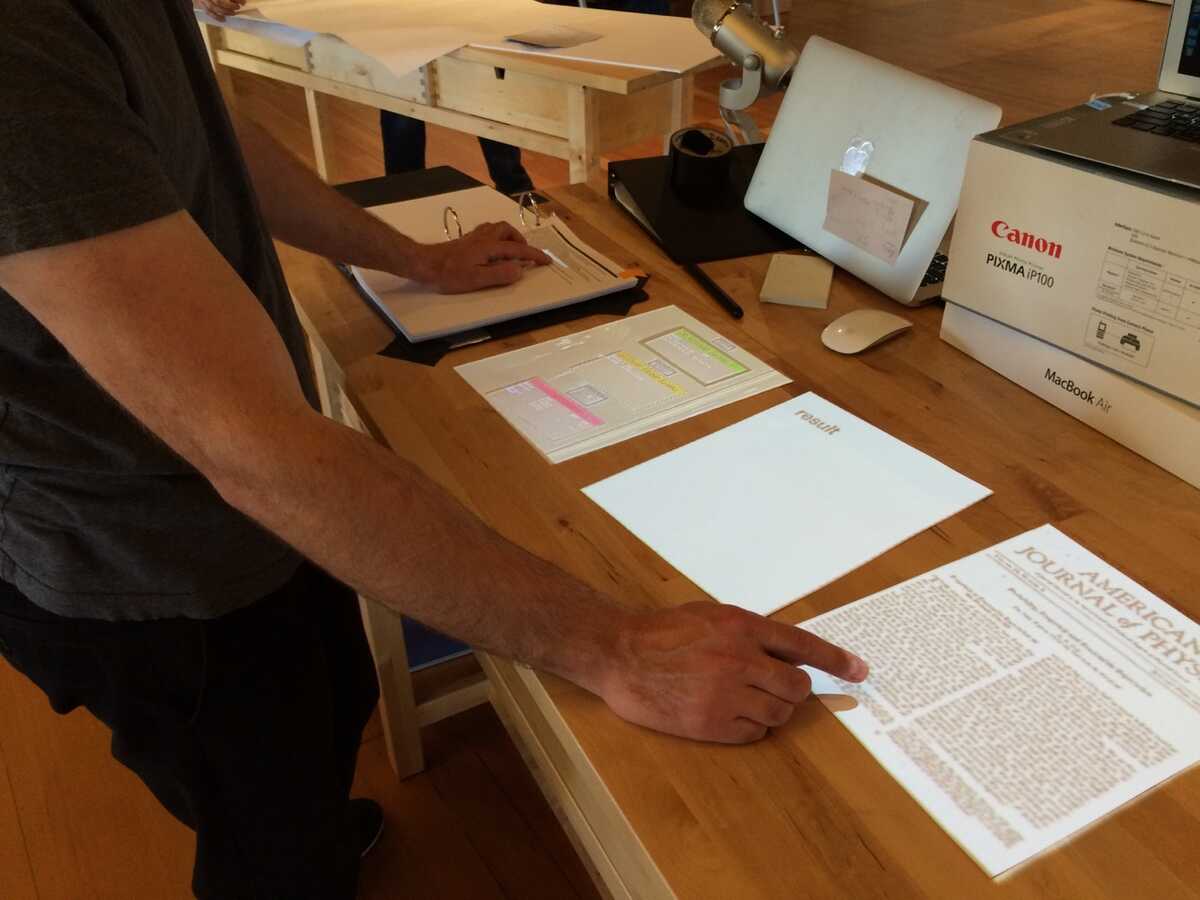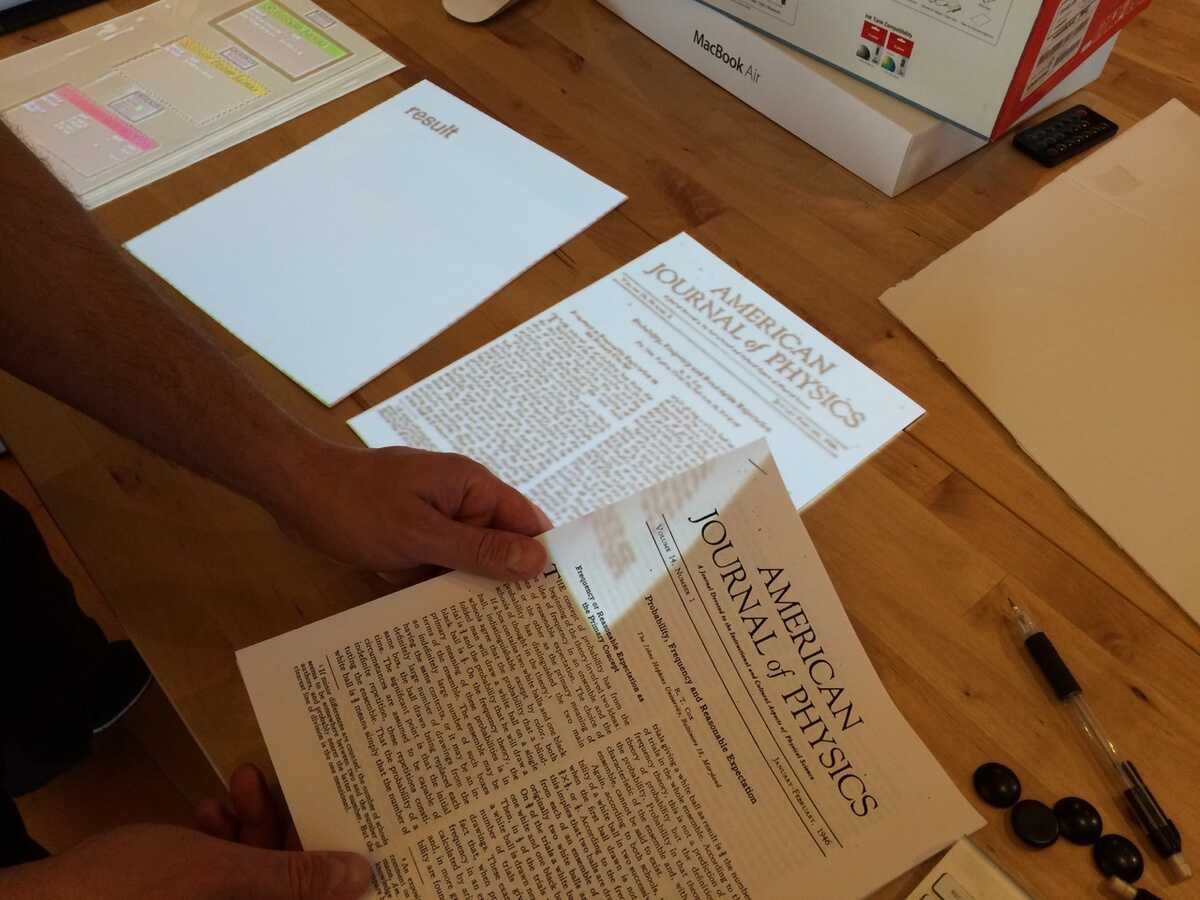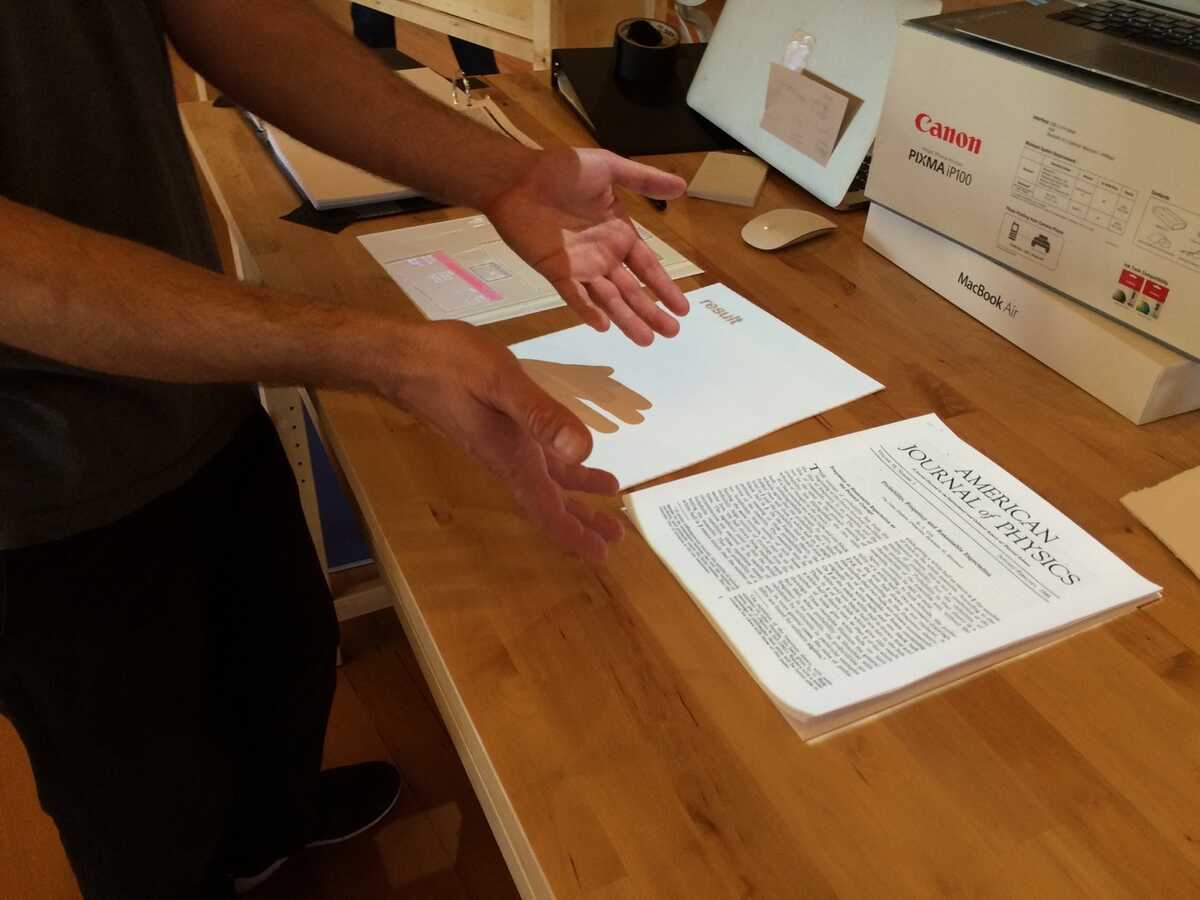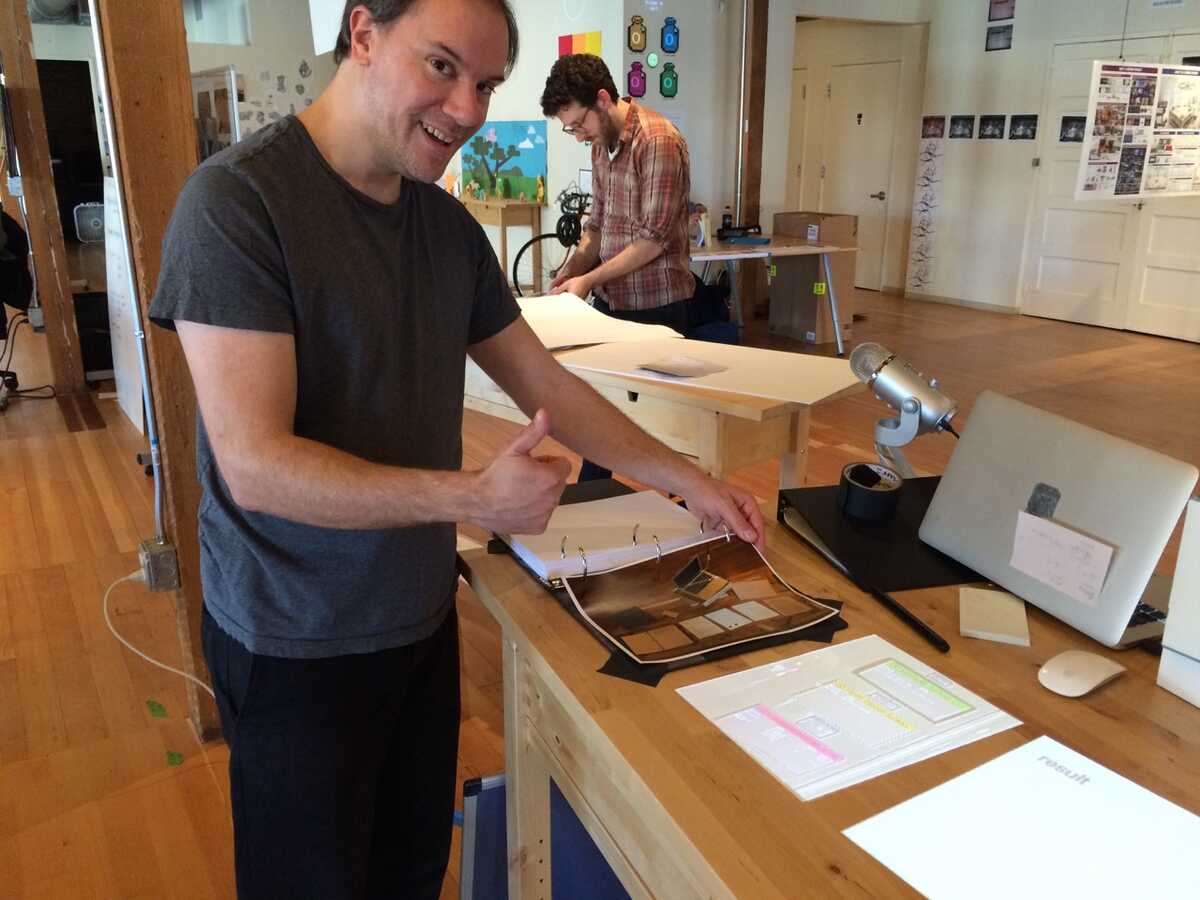In the Memex Jam, I was thinking about how to connect a not-yet-existent (ethnographic field-) Diary-in-the-World with the rest of the space. I opted against distributing the diary fragments around the space, and for keeping one central location with connections to the rest of the room.
To achieve these connections, I came up with "Laser Photo", which has the following four properties:
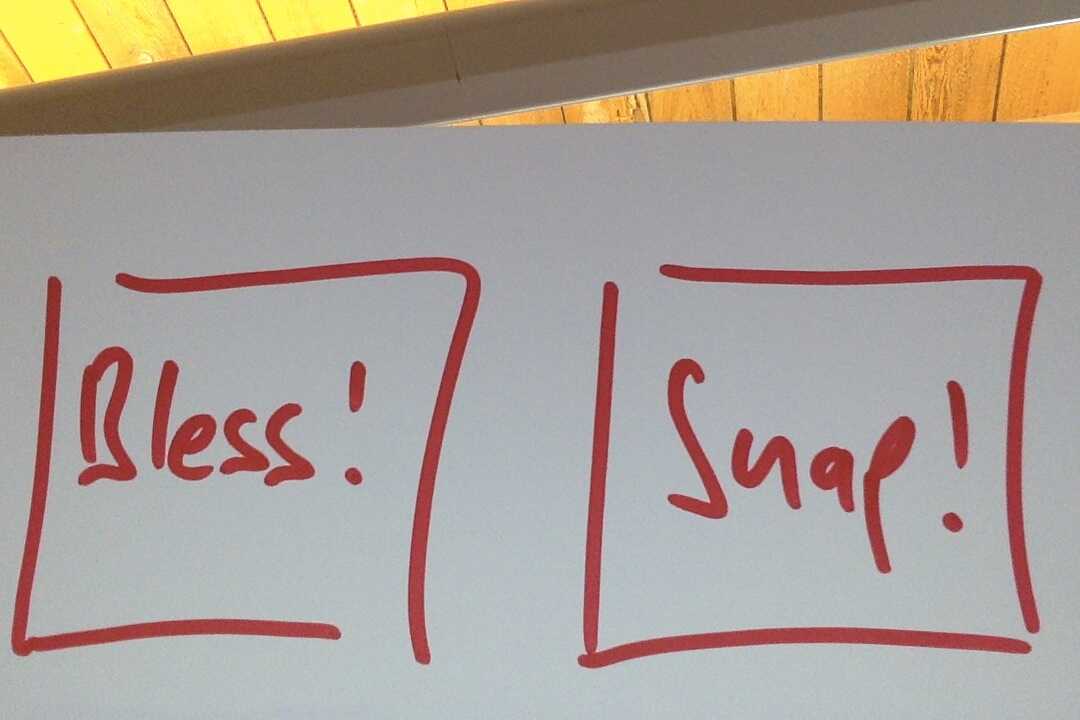

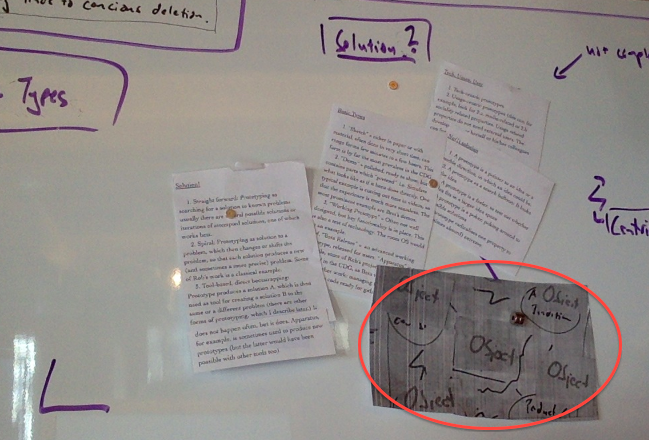
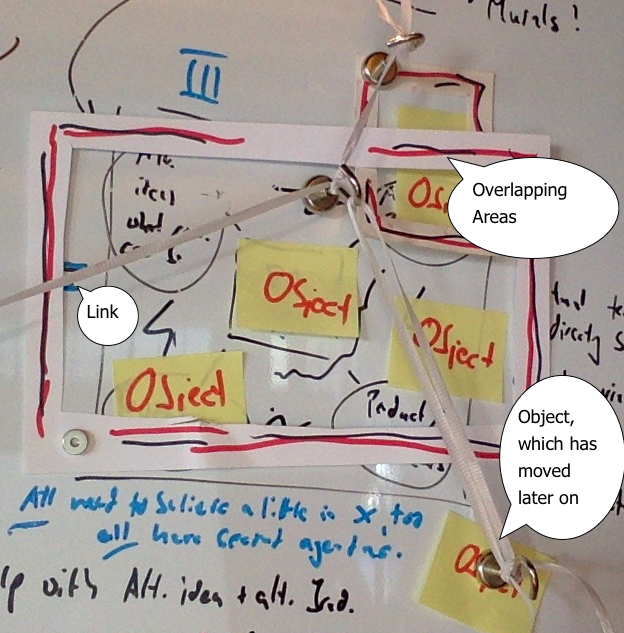

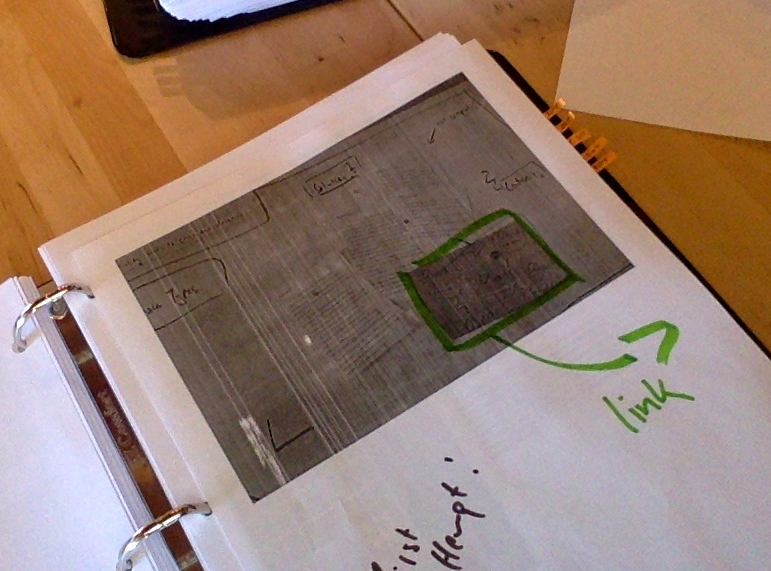

Property 1: You take "laser photos" in a similar way you bless objects in the current system: setting up a rectangle with a laser, but then pressing "snapshot" instead of "bless".

Property 2: When you take such a "laser photo", the system stores, on the one hand, the "photographed area," and, on the other hand, all "photographed objects" it can track inside this "photographed area" (amongst the "photographed objects" are any "physical photos", see property 3).

Property 3: When you take a "laser photo", you automatically get a print out of the stored "photographed area": this is the "physical photo". The system automatically tracks its location in the room. This includes the whiteboard, where I would like to use such "physical photos" amongst my own writing.

Property 4: Two-way links (incoming and outgoing) exist between the "physical photo" and the "photographed area", as well as between the "physical photo" and all the "photographed objects" inside of the "photographed area", The latter links persist even after the "photographed objects" have moved on to other places in the room. If different photographed areas overlap, the system would recognise this, and connect these overlapping areas. The system can visually represent all these links in the room, e.g. via highlighting the connected areas and objects, just like in the current gallery.

How I imagine using laser photos:
With such a system, I might be able to connect stuff in the room (content on posters, etc) to my work space. There, I could mix my own writing with the "physical photos" I took. I could do this on a whiteboard or a table. I could also use "laser photos", which I have taken of stuff inside of binders (such as emails), of quotes in the library, as well as of sequences of time based media (if the latter are visualised in similar fashion like the Engelbart-Demo poster.)

Later on, I could take a meta- laser photo of the result of the work in my workspace. This meta-photo of my workspace would track all the objects it can track, including all the "physical photos" in the work space, thus preserving all the links. The meta-photo could, in turns, become a "physical photo" in my workspace, or go into my own personal binder.

If other people would find such methods useful, too, an increasingly dense web of two-way links might evolve (slightly Ted Nelson-style) . You could not only track all the references you have made from your workspaces of posters or other representations, but also see the density of references other people have made to a particular area or object in the lab. Especially for the latter purpose, it might become useful to use "physical photos" even for singular terms, such as:

On Tue, Mar 22, 2016 at 7:17 PM, Bret Victor wrote:
For the Memex Jam, I was looking at a binder I have which is a kind of notebook for the room project. It contains emails, notes, code, photos, and so on, chronologically through time.I imagined being able to use the binder as an index into dynamic objects and dynamic ideas from the past.---Active PhotosOn my work table, I've placed the binder and a few blank pages.I open to a page with a photo:I project the photo onto one of the pieces of paper. It's an Active Photo that captured the state of the system when it was taken. The projection displays an "alternate reality" which starts from the captured state and simulates forward in time from there. I can watch the dynamic objects do their thing:and even interact with them through the page:The alternate reality is "attached" to the piece of paper. I can move the paper around, put it on a wall, give it to someone, etc. When I'm done with it, perhaps I "wipe" the paper, or maybe I just throw it away.---Old code, old ideasThroughout the binder are snippets of code that represent various ideas and alternatives that we've had. We'd like to have all of these ideas "at hand", and be able to easily try out these bits of code as we come across them.I select some code:and attach its output to another piece of paper. (Perhaps it runs in the context of the system at the point in time when the code was printed, or perhaps it runs in the current context.)I can do this as much as I want to build up a stack of paper, each running different bits of code from the notebook. (Each page shows the "live" results from the running code.) I can spread the pages out, compare them, put the ones I like on a whiteboard or into their own binder, give them to people, etc.---Reference materialLater in the binder, I come across a reference to an article. I bring up the article on a piece of paper.It's a projection right now, but if the article seems interesting, I have it printed out, and can replace the projected article with the hardcopy:I already know where to put down the hardcopy on the desk -- I put it where the virtual article already is, because that's where the article is in my head. It feels like the virtual article "solidified" into a printed article.---Adding to the binderBy the time my work session has ended, I've assembled various things of interest on the desk, which represent what I've been thinking about. I capture a photo of the desk:And put the photo itself into the binder, to reference later.Like all Active Photos, the photo captures the state of the system, including the dynamic objects on the desk. Later, once the physical desk has been cleared, I can still refer to the objects that were on it by interacting with them through the photo:The binder itself perhaps lives on a shelf of the library. Someday, someone else might look through the binder, try out the ideas in it, take a photo of their workspace, and add their photo to the binder.In this way, the binder accumulates the ideas, connections, and riffing of many people through time -- not just static writings and photos, but entire dynamic workspaces, with "deep" links to the dynamic objects that people assembled over the course of their work session.
